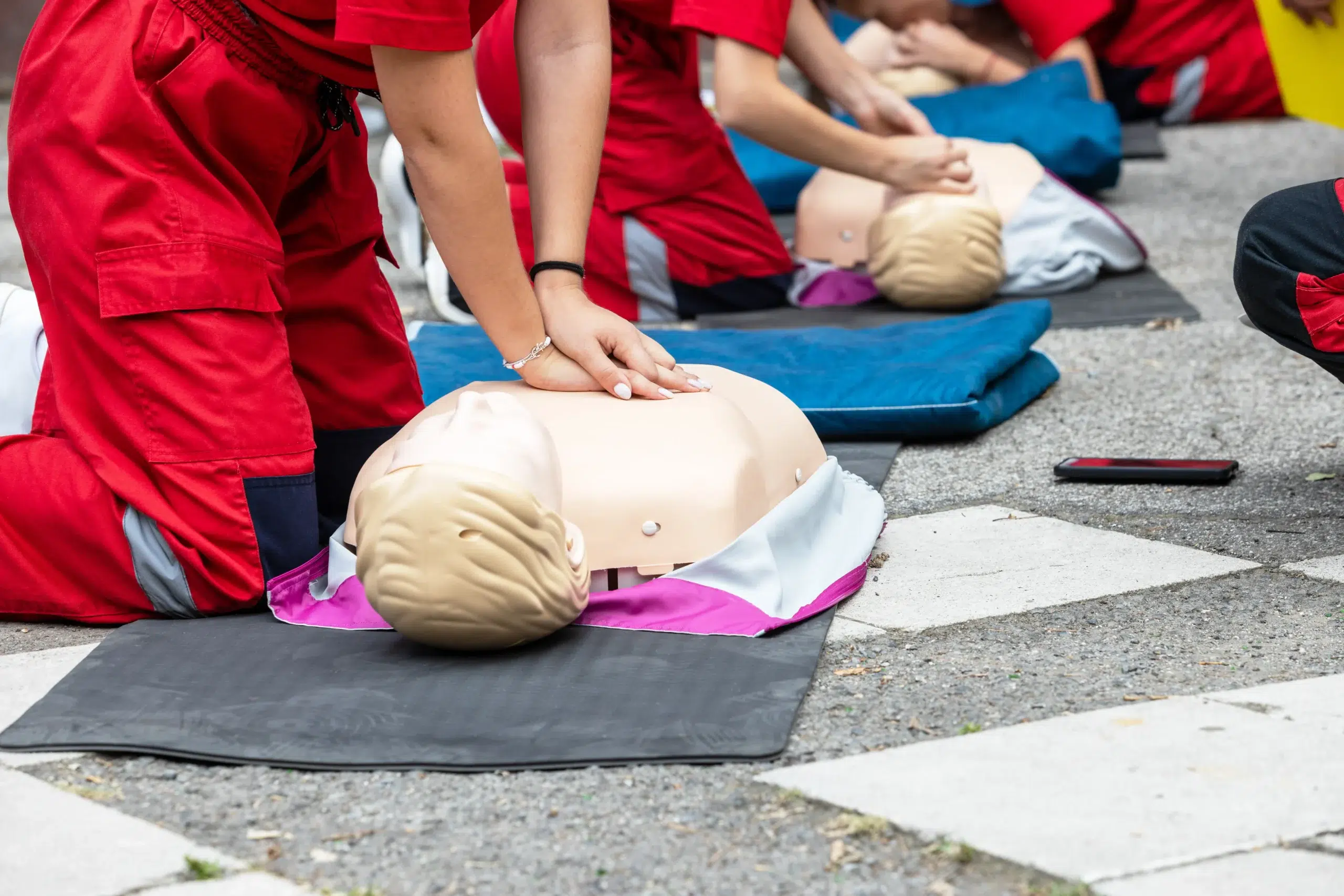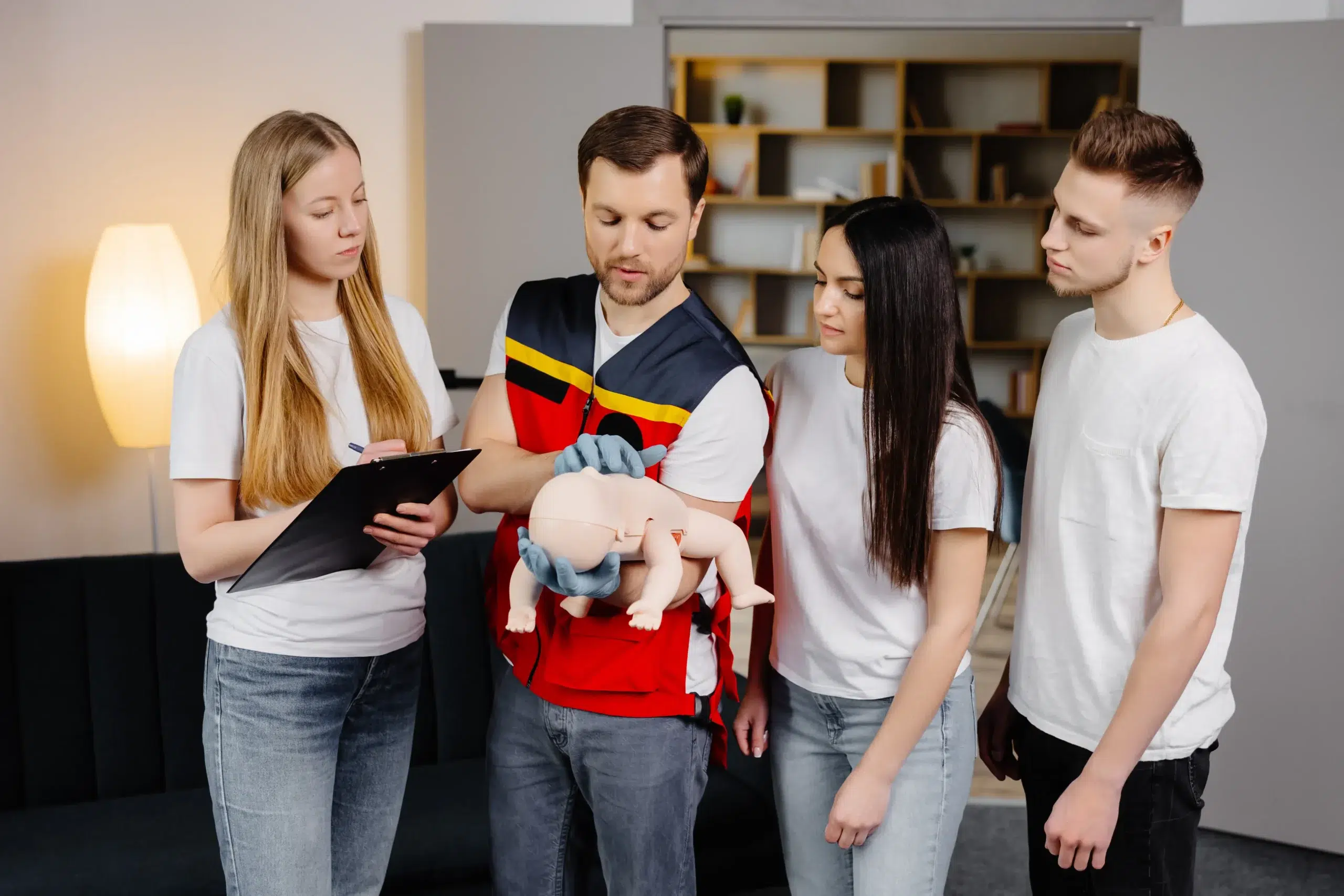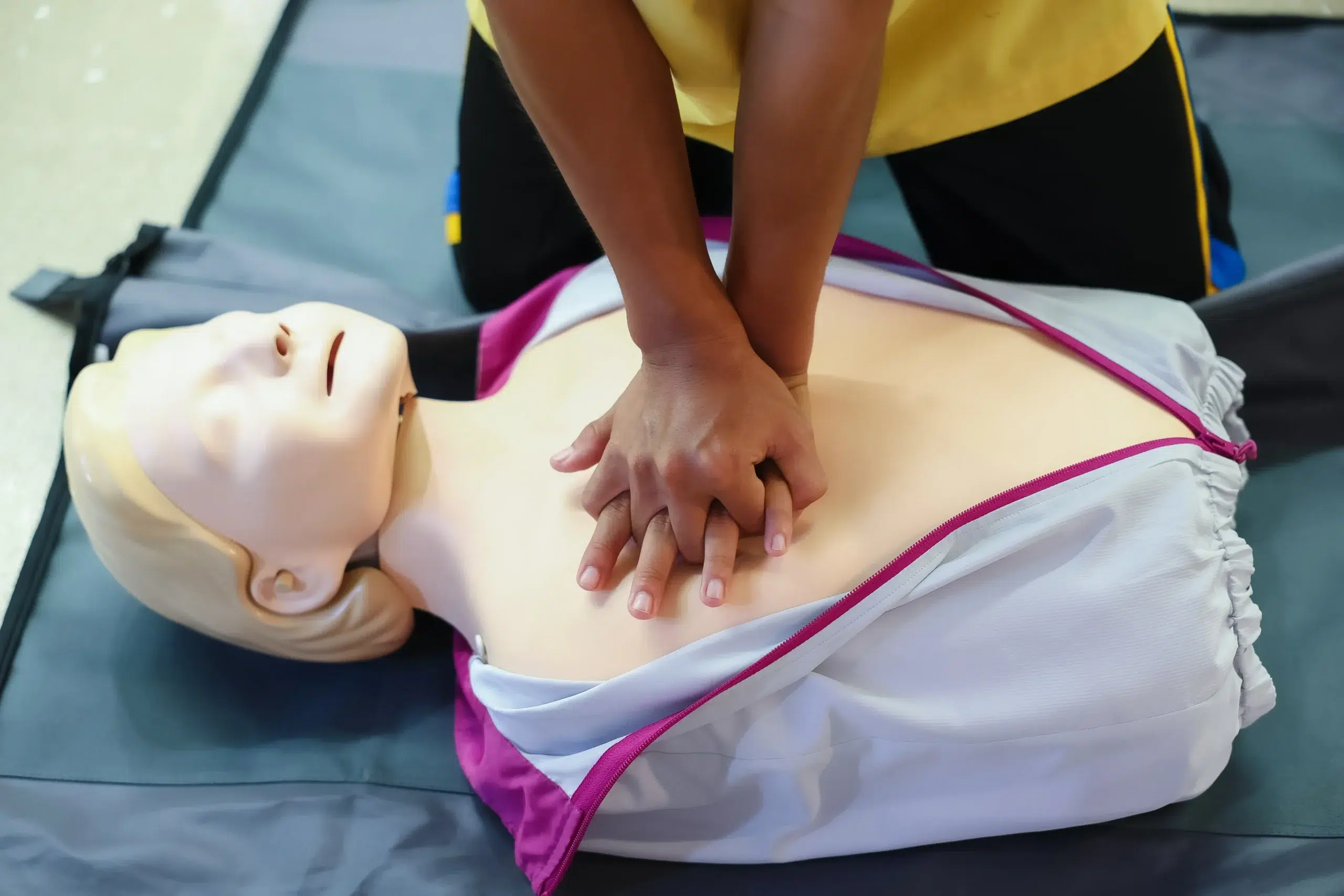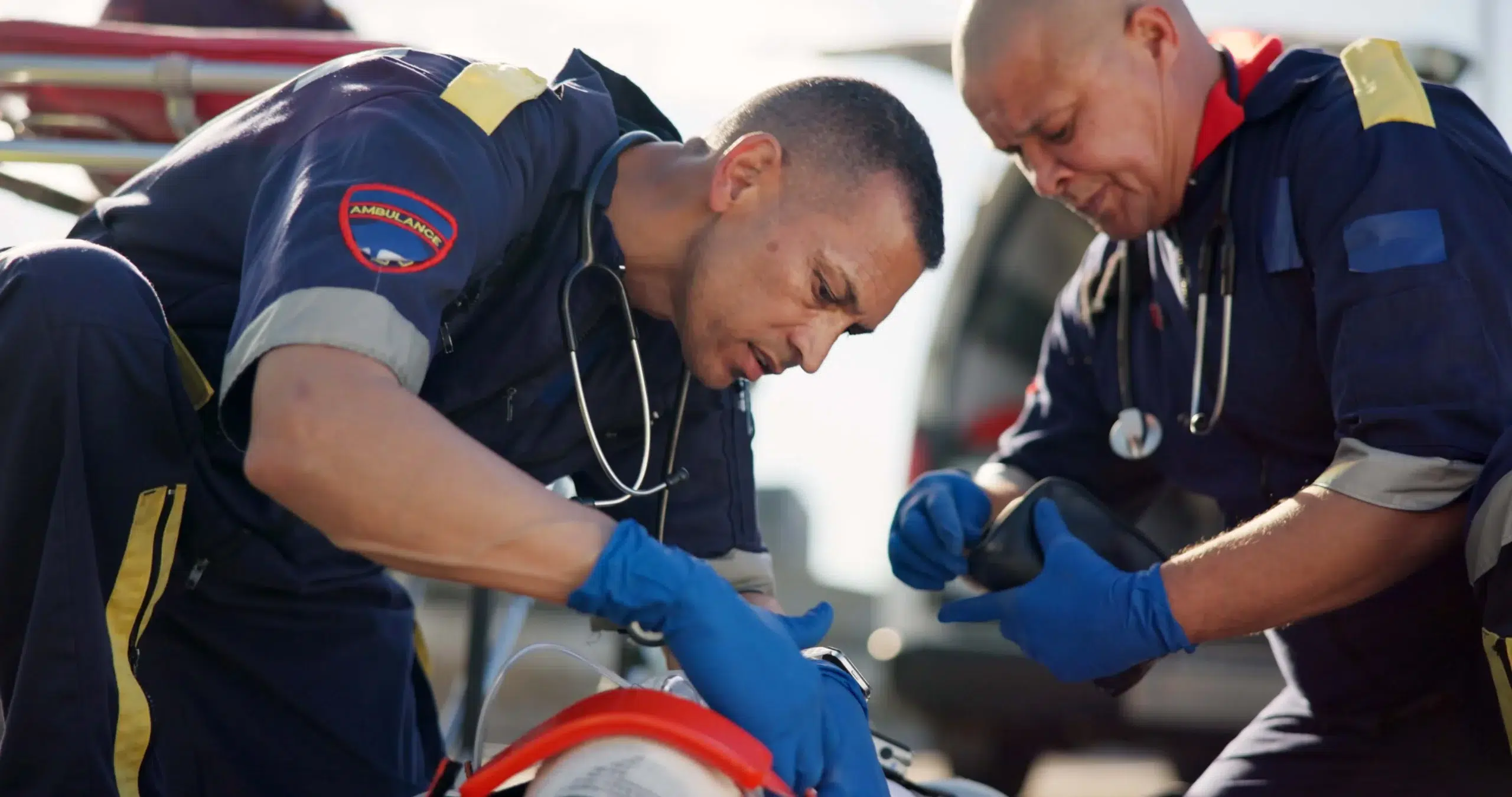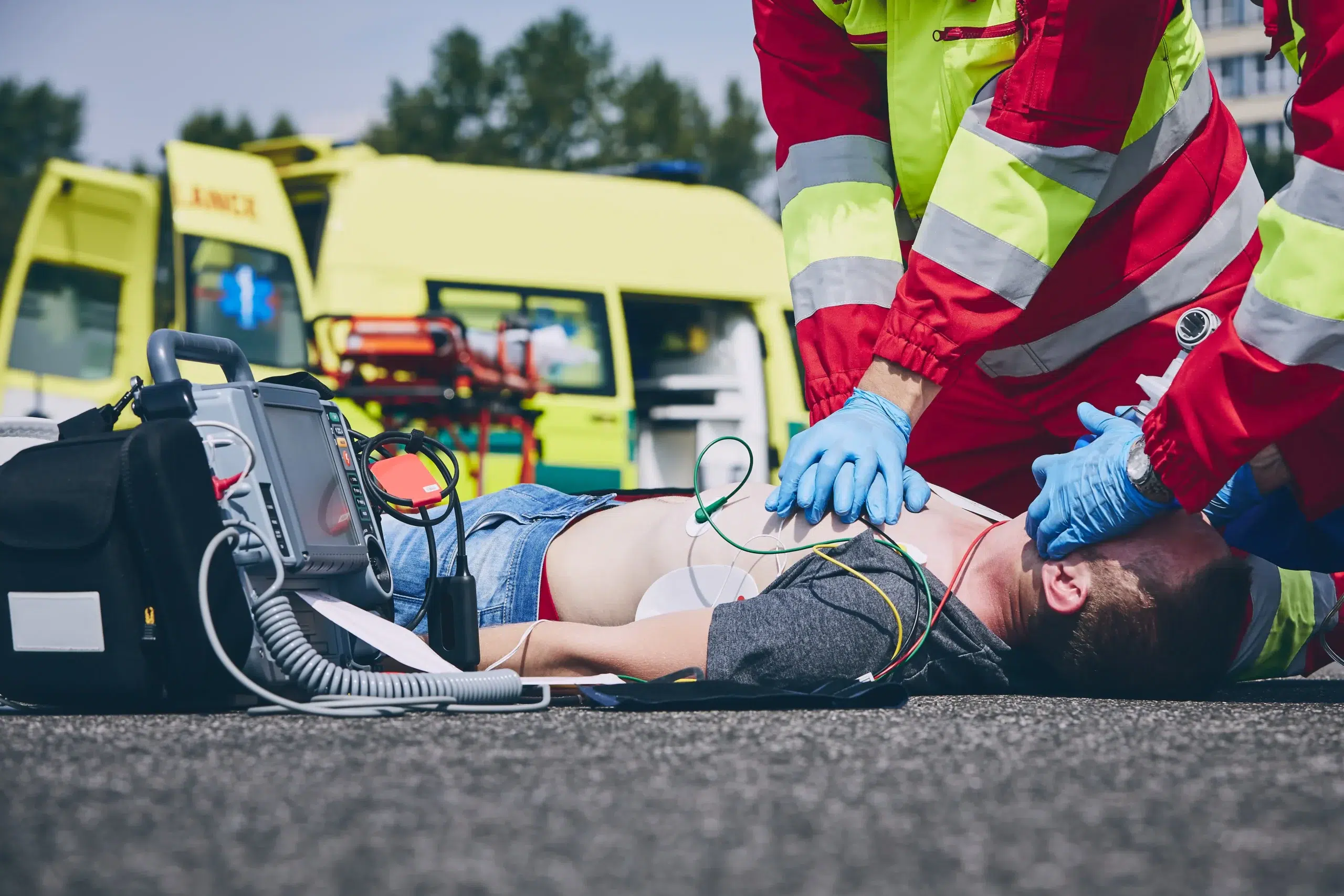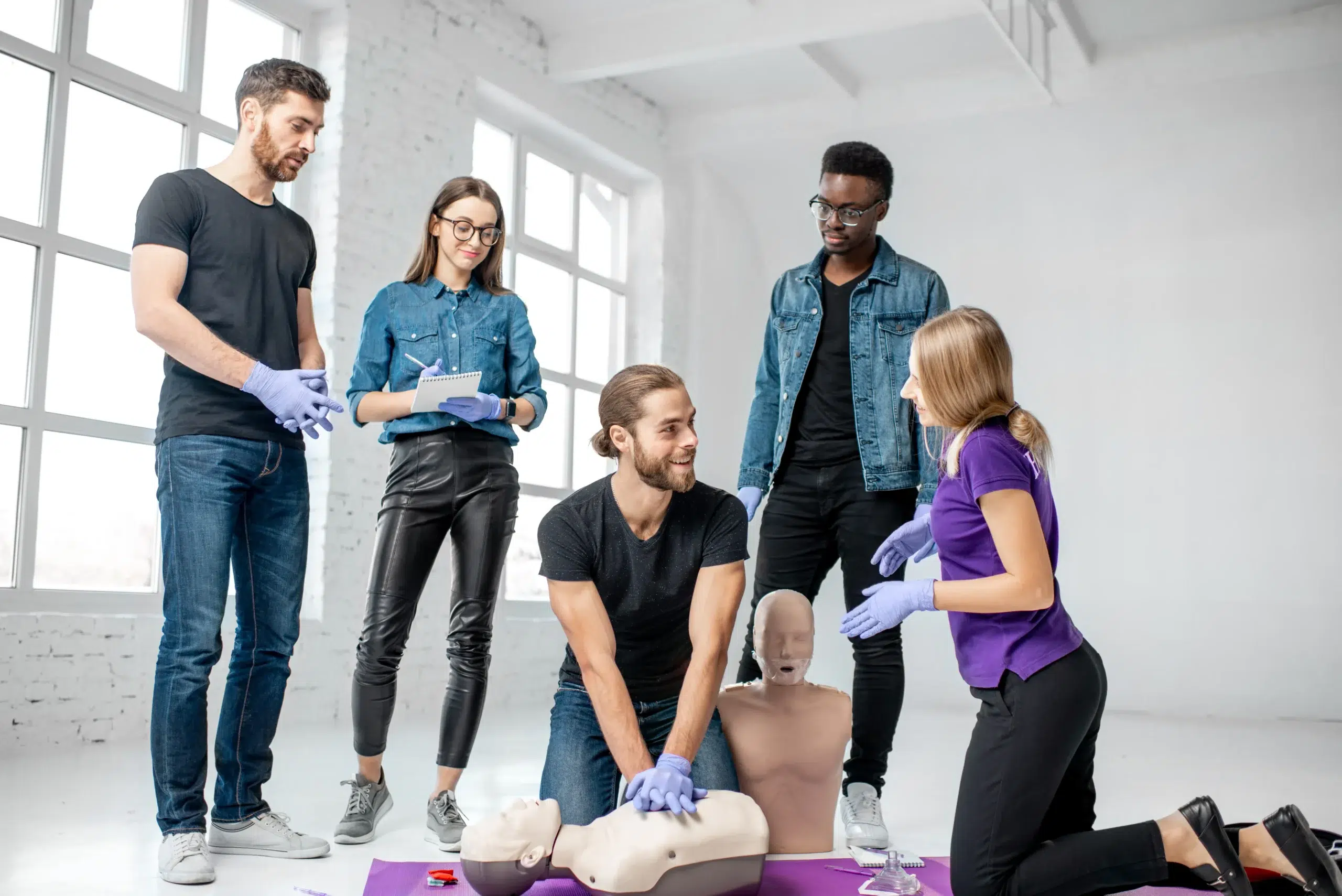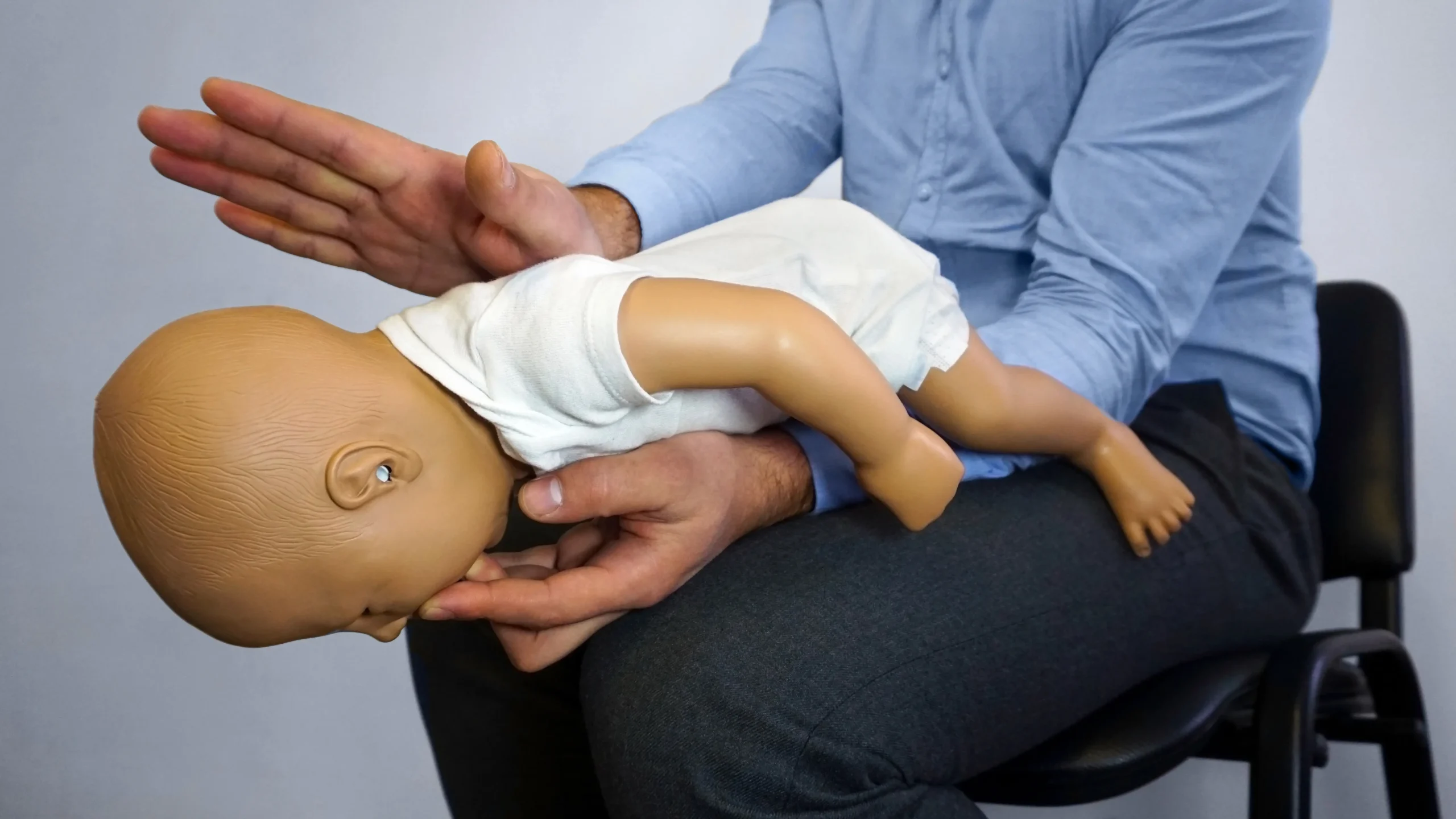Emergencies can happen anytime, anywhere. Being equipped with CPR skills can make you a valuable asset in those critical moments. If you’re looking for “CPR certification near me,” this guide will help you understand the process, the options, and the resources available. We’ll cover the various types of CPR certifications, the costs, and how to find a reputable training provider in your area. We’ll also discuss the different class formats, from traditional in-person classes to online and blended learning options. Let’s get you started on your path to becoming CPR certified.
Key Takeaways
- CPR Certification Empowers You: Equipping yourself with CPR skills through certification builds confidence and prepares you to assist in medical emergencies, regardless of your profession. Choose a course format that fits your learning style and schedule.
- Select the Right Training Level: Different CPR certifications, such as BLS, ACLS, and PALS, address specific needs and professional levels. Understanding these differences ensures you pursue the most relevant training.
- Maintain Your CPR Skills: Renewing your certification every two years keeps you up-to-date with the latest CPR techniques and best practices. Explore convenient recertification options to maintain your skills and preparedness.
What is CPR Certification?
CPR certification means you’ve completed a course and demonstrated the skills to perform cardiopulmonary resuscitation. It’s a formal way to learn the techniques and gain the confidence to act in a medical emergency. While you don’t legally need CPR certification to perform CPR, having this training can make a real difference. It prepares you to handle these high-pressure situations and increases the chances of a positive outcome. CPR involves chest compressions and often rescue breaths—it’s a life-saving technique anyone can learn. The American Red Cross and the American Heart Association offer various CPR training and certification courses. These courses come in several formats, making them accessible to various learning styles and schedules. You can choose from traditional in-person classes, online learning, or a blended approach. CPR certification is typically valid for two years. To renew, you can usually take a shorter refresher course. CPR training equips you with essential skills and empowers you to potentially save a life.
CPR Certification Types
Different CPR certifications cater to various needs and skill levels. Understanding these distinctions will help you choose the right course.
Basic Life Support (BLS)
BLS certification focuses on single-rescuer CPR and is the foundation for all other CPR training. It covers essential life-saving techniques for adults, children, and infants, including chest compressions, rescue breaths, and AED use. Many BLS courses also incorporate training on two-person CPR and bag-valve mask techniques. Safety Training Seminars offers AHA-certified BLS training and has a low price guarantee.
Advanced Cardiac Life Support (ACLS)
ACLS certification builds upon BLS skills and is designed for healthcare professionals who manage cardiopulmonary arrest and other cardiovascular emergencies. This advanced training covers topics such as airway management, intravenous drug administration, and electrocardiogram (ECG) interpretation. Safety Training Seminars provides ACLS courses along with other advanced certifications.
Pediatric Advanced Life Support (PALS)
PALS certification equips healthcare providers with the specialized knowledge and skills to respond to life-threatening emergencies in infants and children. The course emphasizes the systematic approach to pediatric assessment, resuscitation, and stabilization. PALS training is available through Safety Training Seminars.
First Aid and AED Training
First Aid certification teaches individuals how to recognize and respond to common injuries and illnesses. It covers topics like wound care, bleeding control, and managing fractures and sprains. AED training provides comprehensive instruction on using an automated external defibrillator, a critical device for treating sudden cardiac arrest. Often, First Aid and AED training are combined with CPR training. You can find more information about CPR and First Aid certification courses on the Safety Training Seminars website.
Find CPR Certification Classes Near You
Finding the right CPR certification class shouldn’t be a hassle. Whether you prefer learning in a traditional classroom, online, or a mix of both, several resources can help you find a course that fits your needs and schedule. Here’s how to get started:
Online Search Tools
Start your search online. Use search engines like Google, Bing, or DuckDuckGo, and enter specific keywords. Instead of just searching for “CPR classes,” try “CPR classes near me,” “CPR certification in Newark, CA,” or “American Heart Association CPR classes.” This targeted approach helps filter your results and shows you providers in your local area. You can also use online directories specifically designed for CPR training, which often let you filter by location, organization, and class type. Consider factors like class schedules, cost, and certification type when choosing a class. Optimizing your website for SEO ensures that when people search for CPR classes in your area, they find you.
Local Training Centers
Many dedicated training centers focus solely on CPR and first aid instruction. These centers often offer a wider range of courses, including BLS, ACLS, PALS, and more. For example, Safety Training Seminars offers various AHA-certified courses in Newark, CA, serving the surrounding communities of Fremont and San Jose. Local training centers like these often provide more flexible scheduling options, including weekday and weekend classes, to accommodate busy schedules. They also may offer more specialized courses, such as CPR for healthcare providers.
Community Organizations
Community organizations like the American Red Cross and local fire departments frequently hold CPR certification courses. These classes are often more affordable and accessible to the community. The Red Cross provides various course options to fit different schedules and learning styles. YMCA branches and community centers are also great places to check for CPR training opportunities. If you’re in the Manteca area, Safety Training Seminars is a good resource to contact directly for CPR, First Aid, BLS, or ACLS training. These organizations often focus on community outreach and may offer discounts or scholarships for certain groups.
Class Formats & Time Commitment
CPR training comes in several formats, each designed for different learning styles and schedules. Understanding the differences will help you choose the best fit.
In-Person Classes
In-person CPR classes provide hands-on training and interaction with an instructor. This format allows for real-time feedback and supervised practice, building confidence and proficiency in essential CPR skills. These in-person classes typically lead to a two-year certification that meets OSHA requirements, making them ideal for healthcare professionals and those in regulated industries. The direct interaction and opportunity to ask questions makes this a popular choice.
Online Courses
Online CPR courses offer flexibility and convenience, allowing you to learn at your own pace from anywhere with internet access. However, online-only classes do not provide an OSHA-compliant certification. While convenient, they may not be accepted by all employers. Some employers in unregulated fields might accept online certifications, but it’s crucial to verify with your employer before enrolling. If your job requires OSHA-compliant certification, an in-person or blended learning course is necessary.
Blended Learning
Blended learning combines online learning with in-person skills practice. This format lets you complete the theoretical components online at your convenience, then attend an in-person session to practice your skills and receive instructor feedback. Blended learning can be a great option if you want flexibility but also value hands-on training. Check with your employer to ensure a blended learning CPR course meets their requirements.
Duration & Scheduling
The duration of CPR courses varies depending on the format and content covered. Most courses range from about two hours to a little over two hours. Many training centers offer flexible scheduling options, including weekday and weekend classes. Safety Training Seminars offers classes seven days a week, making it easier to find a time that works for you. Check our course calendar for available dates and times.
Costs & Value of CPR Certification
Getting CPR certified is an investment in your skills and the well-being of your community. Let’s break down the typical costs associated with CPR training and explore ways to find affordable options.
Average Price Range
The average cost for CPR certification typically falls between $40 and $100 for basic CPR and AED training. This range can vary based on factors like your location, the training provider, and the specific certifications included in the course. For example, a combined CPR/First Aid certification course might have a different price point than a BLS course. Knowing what kind of certification you need will help you compare prices effectively.
Discounts & Special Offers
Many CPR training providers offer discounts to make training more accessible. Keep an eye out for special promotions or consider bundling CPR with First Aid training to potentially lower the overall cost. For larger groups, discounted rates are often available. For instance, Safety Training Seminars offers discounted group CPR training for businesses and organizations looking to train multiple employees at once.
Group & Student Discounts
Group discounts aren’t just for corporations. Many training centers extend these savings to community groups, schools, and other organizations. Student discounts are also common, making it easier for those in healthcare programs or related fields to get certified. Check with your school or any local training centers, like Safety Training Seminars, to see what group or student discounts they offer. Our low price guarantee ensures you’re getting the best possible value.
Price Comparison & Low Price Guarantees
When comparing CPR class prices, make sure you’re comparing similar courses and certifications. Some providers might offer a lower price but not include the same level of instruction or certification as others. Look for training centers that offer a low-price guarantee, like Safety Training Seminars, which demonstrates their commitment to providing affordable, high-quality training. You can find our BLS course schedule and pricing directly on our website.
Top CPR Certification Providers
Finding the right CPR certification provider is key to receiving high-quality training. Several reputable organizations offer comprehensive courses. Here are a few leading providers to consider:
American Heart Association (AHA)
The American Heart Association (AHA) is a leading provider of CPR training and certification. Their courses are designed to be easy to learn and cover essential skills for Basic Life Support (BLS) and First Aid, ensuring participants are well-prepared for emergency situations. The AHA is widely recognized and respected, making their certifications highly valued. For those seeking top-tier training, the AHA is an excellent choice. If you’re in the Newark, CA area and interested in AHA-certified courses, check out the BLS courses offered by Safety Training Seminars. They also provide information on RQI classes for healthcare professionals.
American Red Cross
The American Red Cross offers a variety of CPR training courses, including in-person, online, and blended learning options. Their courses are recognized for workplace certifications, making them a reliable choice for individuals and organizations. The Red Cross’s widespread presence makes finding a class near you convenient.
Safety Training Seminars
Safety Training Seminars provides CPR, first aid, and other safety training courses certified by the American Heart Association. They focus on equipping participants with the skills to respond effectively in emergencies. With a commitment to accessibility, they offer a low price guarantee and discounts for groups. They also offer CPR and first-aid certification courses. Serving Newark, Fremont, and San Jose, CA, Safety Training Seminars is a convenient option for those in the area.
National CPR Foundation
The National CPR Foundation focuses on providing affordable and accessible CPR and first aid training courses. They offer a range of options suitable for both individuals and organizations. Their commitment to affordability makes them a practical choice for those seeking quality training on a budget.
ProCPR
ProCPR specializes in online CPR certification courses that cater to both healthcare professionals and laypersons. Their flexible and convenient training options make it easy for anyone to obtain CPR certification at their own pace. For those with busy schedules or who prefer online learning, ProCPR is a great option.
Certification Validity & Renewal
Knowing how long your certification is valid and how to renew it is essential for staying current with the latest CPR techniques. This section covers everything you need to know about maintaining your CPR credentials.
Certification Duration
CPR certifications, like those from the American Heart Association and the American Red Cross, are typically valid for two years. This timeframe reflects the ongoing evolution of best practices. Keeping your certification current ensures you’re prepared to provide effective care in an emergency. At Safety Training Seminars, our certifications align with these standards, providing you with a nationally recognized credential.
Renewal Requirements
Before your certification expires, you’ll need to take a recertification course. If your job requires certification, an in-person skills session is usually necessary. This hands-on component allows you to refresh your practical skills and receive feedback from a certified instructor. Check with your employer or certifying organization for specific renewal guidelines. Safety Training Seminars offers various renewal courses, including convenient weekend and evening options.
Recertification Options
Several recertification options exist, including in-person classes and blended learning formats that combine online coursework with in-person skills sessions. While online-only courses offer flexibility, they don’t typically meet workplace requirements. For recertification near Fremont, Newark, or San Jose, Safety Training Seminars provides a range of CPR recertification courses designed to fit your schedule. We also offer discounted group rates for businesses looking to recertify multiple employees.
Related Articles
- CPR Certification in Newark: Your Complete Guide – Newark CPR Classes
- CPR Certification in San Jose: A Complete Guide
- CPR Certification in Fremont: Your Complete Guide – Newark CPR Classes
- CPR Classes in Fremont: Your Comprehensive Guide – Newark CPR Classes
- CPR Courses in Fremont: Find the Right Class for You – Newark CPR Classes
Frequently Asked Questions
How do I choose the right CPR certification course? Consider your needs and career goals. Basic Life Support (BLS) is good for general knowledge, while healthcare providers often need Advanced Cardiac Life Support (ACLS) or Pediatric Advanced Life Support (PALS). First Aid and AED training are valuable additions to any CPR certification. If you’re unsure, contact a training center like Safety Training Seminars for guidance.
What’s the difference between online and in-person CPR training? Online courses offer flexibility, but only in-person or blended learning courses provide OSHA-compliant certification, which is often required for healthcare and other regulated professions. In-person classes offer hands-on practice and direct instructor feedback. Blended learning combines online theory with in-person skills sessions.
How much does CPR certification cost, and are discounts available? CPR certification typically costs between $40 and $100. Many providers offer discounts for groups, students, or bundling courses. Safety Training Seminars has a low price guarantee, so you can feel confident you’re getting a good value.
How long is CPR certification valid, and how do I renew it? Most CPR certifications are valid for two years. Renewal involves taking a recertification course, which often includes a hands-on skills assessment. Check with your employer or certifying organization for specific requirements.
What are some reputable CPR certification providers in my area? The American Heart Association (AHA) and the American Red Cross are nationally recognized providers. For local options in Newark, Fremont, or San Jose, California, Safety Training Seminars offers various AHA-certified courses. You can also check with local fire departments, community centers, or the YMCA.
